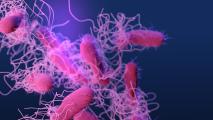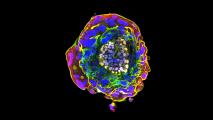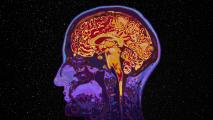New smart stem cells show a promising power to heal.
Researchers have reprogrammed human fat cells into adaptive smart stem cells that can lie dormant in the body until they are needed to heal various tissues. They demonstrated the cells’ effectiveness at healing damaged tissue in a mouse study.
To create the smart stem cells, the team from UNSW Sydney exposed human fat cells to a compound mixture. After about three and a half weeks, the cells lost their original identity and began acting like stem cells, or iMS (induced multipotent stem cells).
“The stem cells we’ve developed can adapt to their surroundings and repair a range of damaged tissues,” said UNSW hematologist John Pimanda, and co-author of the study, which they published in Science Advances.
“To my knowledge, no one has made an adaptive human multipotent stem cell before. This is uncharted territory.”
Next, they injected the experimental iMS cells into healthy mice to see how the cells would respond. The cells remained dormant for some time, but they activated when the mouse was injured. Because of the cells’ regenerative ability to act as “smart stem cells,” they transformed themselves into whatever tissue was needed to heal the injured mouse — like bone tissue, heart, or skin.
“The stem cells acted like chameleons,” said Avani Yeola, lead author on the study at UNSW Medicine & Health. “They followed local cues to blend into the tissue that required healing.”
All cells in a human body contain the same DNA. To differentiate between tissues, like a skin cell versus a bone cell, the cells only use a small portion of their total DNA. The rest of the DNA is shut down naturally by local modifications.
“The idea behind our approach was to reverse these modifications,” said Pimanda. “We wanted the cells to have the option of using that part of the DNA if there was a signal from outside the cell.”
Tissue-specific stem cells, like those that are restricted to becoming parts of the liver or lung, are limiting. But smart stem cells that can respond to their environment and become any tissue, like multipotent stem cells, will have many uses.
In the future, doctors could take a patient’s fat cells, incubate them with the compound, and inject them into the patient to heal heart damage or trauma injuries.
But applications like this could be a long way off. The team needs to do much more research to prove this is safe in humans for different kinds of trauma before it becomes a real therapy.
We’d love to hear from you! If you have a comment about this article or if you have a tip for a future Freethink story, please email us at tips@freethink.com.






